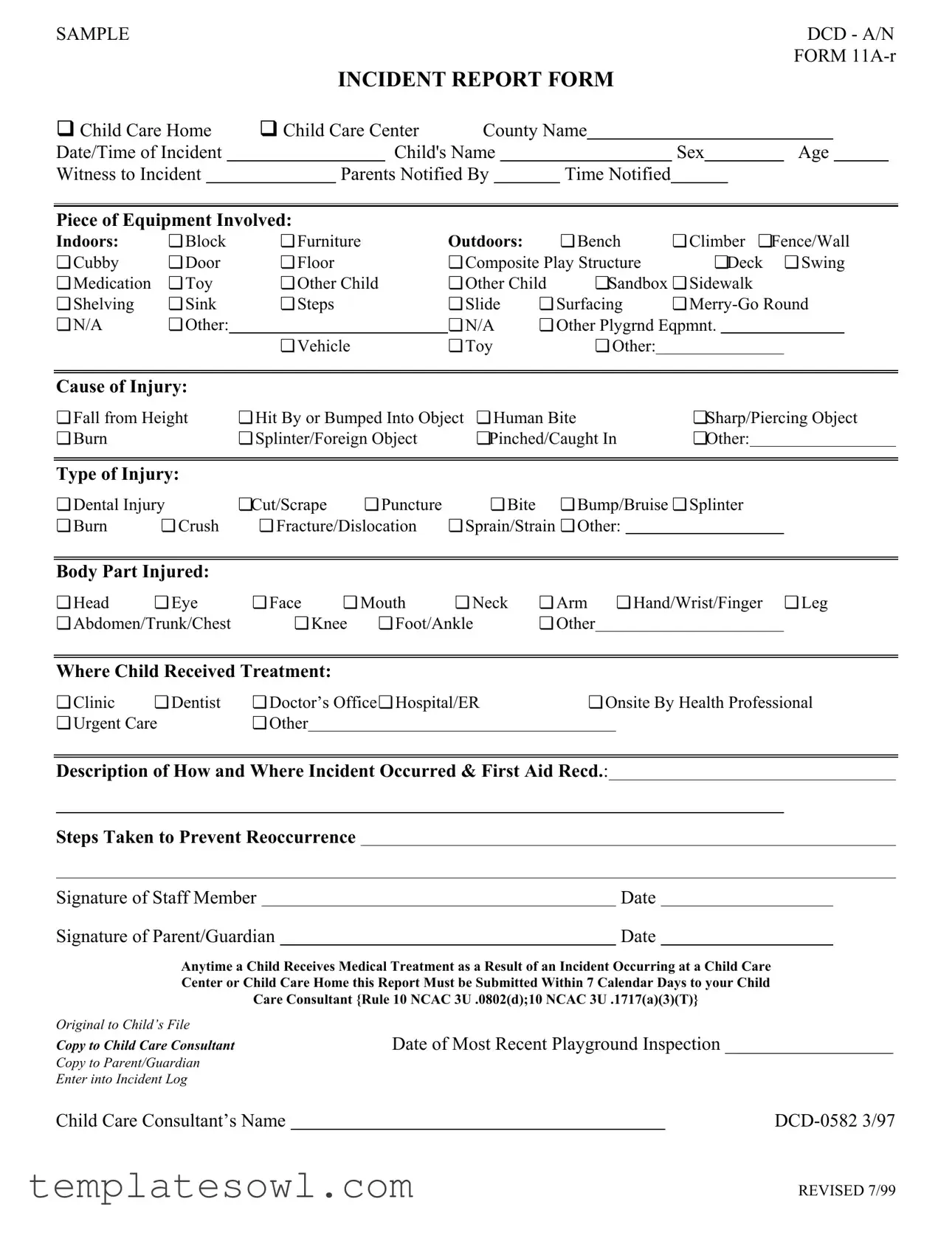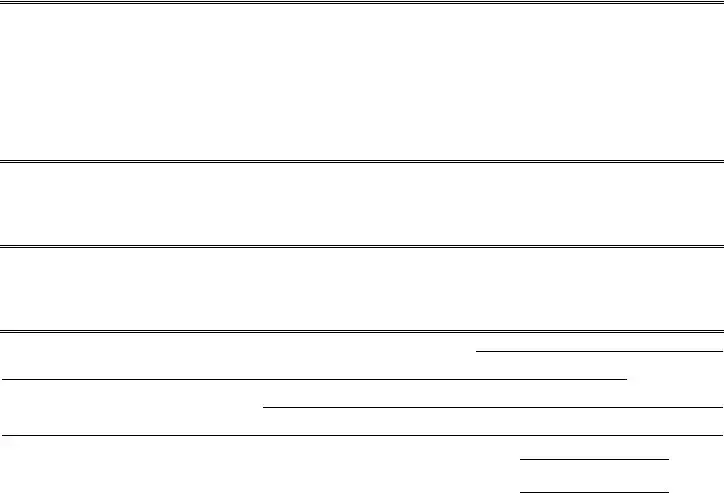Completing the 11 A R form correctly is essential for accurately reporting incidents in child care settings. Unfortunately, many people make common mistakes that can lead to incomplete or unusable reports. Below are ten mistakes to avoid when filling out this crucial form.
The first mistake is not providing complete information about the incident. Ensure that all fields, especially those detailing the child’s name and age, are filled out entirely. Missing data can delay processing and hinder follow-up actions.
Another frequent error is failing to describe the incident clearly. A vague description makes it hard for authorities to understand what happened. Include specific details about how the incident occurred, the environment, and any actions taken immediately afterward.
Many individuals overlook the timeliness of notification. Parents must be informed promptly when an incident occurs. Noting the exact time of notification on the form is crucial, as this can affect decisions on care and follow-up actions.
Inconsistent terminology can confuse those who read the report. When describing the type of injury, stick to the available options. Avoid using ambiguous words that may not clearly convey the severity or type of injury.
Another mistake involves leaving out witness information. If there were witnesses to the incident, their names and statements should be included. This can provide key insights into what happened and help with the follow-up process.
Some people also forget to include all relevant equipment involved. When selecting equipment on the form, ensure you check every applicable box. Omitting equipment or marking "N/A" incorrectly can lead to gaps in data collection.
Another common problem is inaccurately indicating where the child received treatment. Ensure this section is filled out based on where treatment actually occurred. This helps with tracking the medical response following an incident.
One must not ignore the importance of preventative measures. Clearly outlining steps taken to prevent reoccurrence is crucial. This shows proactive care and can help improve safety protocols in the future.
In signing the form, individuals sometimes forget to check that all signatures are obtained. Both the staff member and the parent or guardian need to sign the report. Missing signatures can invalidate the report.
Finally, people often neglect the submission timeline. This report must be submitted within seven calendar days. Late submissions can lead to compliance issues, so it’s vital to keep track of this deadline.

